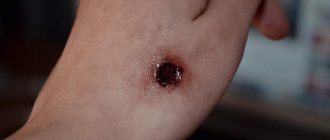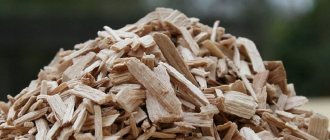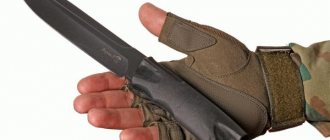Today, applying a tourniquet during bleeding is widely used in medical practice and can save a person’s life. According to official statistics, this remedy is used in 10-15% of all wounds on the battlefield. The tourniquet owes its appearance to military clashes, because its prototype was developed by military field surgeon Friedrich von Esmarch back in the 19th century.
The modern model is significantly different from the one that was used 100-150 years ago. The current standard was reached only in the 1930-1940s. However, despite more than 70 years of tourniquet use by modern standards, many still do not know how to properly apply a tourniquet. Meanwhile, this knowledge can be useful for saving lives in the event of a car accident, accident, etc. Below are all the nuances associated with its use: application and removal techniques, recommendations and main mistakes.
What is a tourniquet
A tourniquet is a specialized medical device that is applied to stop serious bleeding. It is used in extreme cases where there is a risk of death.
There are several types of tourniquet. The main classification is the division into homemade and professional, medical/tactical. In principle, its role can be played by any oblong piece of fabric, rubber or artificial leather (for example, a belt) of relatively small width, which can be wrapped around the limb several times and tightened.
Options that can be used as this tool:
- rope;
- elastic bandage;
- strong rubber seal;
- a narrow and long piece of fabric.
The principle of operation of the tourniquet is based on clamping the main vessels (arteries). Covering can be achieved by two methods: significant compression by surrounding soft tissues or pressing against a bony protrusion.
Often, if the anatomy of the damaged area allows it, a combined version of clamping is encountered: the applied tourniquet puts pressure on the soft tissues, which, in turn, press the artery against the bony protrusion. The vascular passage closes, as a result of which blood circulation below the site of application of the tourniquet stops. There is also a separate method of clamping with soft tissues, for example, when the bone is sufficiently distant from the main vessel.
The tourniquet has saved many lives, but it carries not only a positive effect, but also a danger. It leads to a complete stop of blood circulation under the application site, which cannot but lead to negative consequences. One of the most serious complications is complete tissue death with the subsequent need for amputation. Complications are described in more detail below. To prevent the development of complications and at the same time save the patient's life, it is necessary to familiarize yourself with the instructions below for applying a tourniquet.
Incorrect tourniquet application
The most dangerous consequence of improper application of a tourniquet is death, which occurs as a result of massive blood loss. Tissue necrosis, which develops with prolonged pressure on the skin, is also life-threatening. This leads to the need for amputation of the limb.
The further life and health of the victim depends entirely on how quickly and correctly first aid is provided. It is important not to get confused or panic at the sight of blood. Coherence of actions will save a person’s life. If there is no tourniquet, you can use any available means to stop the bleeding.
Types of tourniquets
At the moment, 4 types of tourniquet are commonly used. Some of them are outdated, others are being actively improved and are therefore more preferable:
- Langenbeck. The most primitive design, improved on the basis of a prototype from the 1870s. Produced approximately since the 1970s. Consists of a rubber band with snap fasteners on one end and holes for their entry on the other.
- With dosed compression. It is a belt made of synthetic material with a plaque made of a combined material (metal plus plastic). Used during the Second World War. At the moment it has fallen out of use, which does not prevent some manufacturers from still producing and selling this species. The peculiarity is that the required dose of tension is marked on the plaque - it will be different for the shoulder or for the hip.
- Red Army with a twisting element. Also used during World War II. The design is similar to the previous one, that is, there is a leather or fabric base and plaques. However, there are no coordinates on how to regulate the pressure force. The advantage is the presence of a “twist” - a stick, the twisting of which increases tissue contraction, which allows you to quickly stop bleeding even with poor physical development of the rescuer.
- Alpha. This type of tourniquet is considered safe as it does not cause injury to arteries, nerves or tissue necrosis. Recommended by doctors. The design feature is a ribbed surface: it allows you to maintain the movement of blood through the capillaries, while the artery is completely compressed.
The first three types of tourniquet are not recommended to be used. They are outdated and performed poorly in practice. 1 and 2 do not work at low temperatures (less than +5 and below 0, respectively). If used in winter, the surface of the rubber band simply cracks and elasticity decreases.
A tissue tourniquet with dosed compression becomes too rigid due to the formation of ice, further injuring the tissue and losing the necessary pressure on the limb.
The type of Red Army tourniquet has no restrictions on the temperature of use, but the presence of metal elements makes it dangerous: in places of contact with the skin, these parts cause necrosis of capillaries, larger vessels, and nerve damage. In addition, types 2 and 3 have a fixed clearance, i.e. the device itself looks like a circle with a hole. A hand or foot is inserted into it. It will not be possible to help a person whose arm or leg is under a rubble using this type of tourniquet, and both options take quite a long time to put on, and with heavy bleeding, every second counts.
Indications for use of a tourniquet for bleeding
In case of bleeding, a tourniquet is applied as a last resort. This recommendation is due to the fact that incorrect application of this item can cause amputation of a limb or, with further unprofessional actions or lack of medical assistance, even the death of the patient. Since tourniquets are associated with high risks, even medical professionals apply them in particularly dangerous situations.
So, applying a tourniquet during bleeding is possible in the following situations:
- Blood flows like a fountain. This is a sign of arterial bleeding, which can be fatal. A tourniquet may also be required for venous bleeding, but only if the limb is severely/deeply excised. Before applying a tourniquet for bleeding, other measures must be taken. The first action should be to raise the limb (this may be enough not only to ease the bleeding, but also to stop completely). Next, a compression bandage is applied. If the blood loss is obviously too rapid, you cannot hesitate: bypassing the stages of washing and treating the wound, you need to take care of the tourniquet.
- The victim lost a limb. In this regard, you can forget about the risk of amputation: some tissue has already been lost, and another part will be removed after admission to the hospital. However, if the limb is not completely torn off, care should be taken to ensure that the constriction fits as close to the wound as possible.
- It is impossible to accurately determine the source of bleeding. As a consequence, it is difficult to know its nature (venous/arterial). Similar situations are possible during military operations, when an explosive device is detonated, when involved in an accident, etc.
- The patient has two or more sources of bleeding, and only one person can help him. In this case, the person who plays the role of a rescuer, if there is a threat of hemorrhage up to loss of consciousness and death, must apply a tourniquet to one of the wounds, then use another, softer method to stop the second bleeding. The tourniquet from the first wound must be removed (if the artery is not affected) and a series of milder hemostatic measures must also be carried out, for example, applying a compressive bandage.
- There are several wounded per rescuer. The principle is the same as in point 4: a tourniquet is a short-term measure; if possible, it should be removed as quickly as possible and the bleeding should be stopped by another method.
If there is a lot of blood, but it does not flow like a fountain, there is only one patient and there is also one serious wound, then it is recommended to first resort to applying a compressive bandage. This measure is preferable because it stops bleeding of minor and moderate severity, but at the same time carries almost no risk of tissue necrosis.
Duration of tourniquet application
When a bleeding vessel is compressed, the entire limb and entire body suffers. Lack of blood affects the general condition of the victim, as well as the metabolic processes of the injured limb. Therefore, consider the duration of the safety tourniquet:
- For arterial bleeding in the cold season, application of a tourniquet can last no more than 1.5 hours, in the summer - no more than 2 hours.
- In case of venous bleeding, application of a tourniquet can last up to 6 hours.
If it is not possible to transport the patient to the hospital, and the time for applying the tourniquet is almost over, you can loosen it a little. If this does not worsen the bleeding, the patient can be taken to the hospital.
Complications when applying a tourniquet
The main possible complications are associated with tissue necrosis. Necrosis occurs if the tourniquet is applied for too long, blood does not flow to the tissues and they are irreversibly destroyed.
What this can lead to:
- loss of sensation in a large part of the limb;
- limb amputation;
- fatal if decomposition products enter the bloodstream above the wound site.
Rules for applying a tourniquet
It is important to follow the following guidelines regarding the tourniquet first aid process:
- It is necessary to find a material that will not violate the integrity of the skin of the limb or torso. In other words, thin and sharp objects, such as wire, part of a fishing line, will not work. They will only worsen the bleeding, creating a new wound, and can also lead to necrosis faster.
- The patient must be positioned so that the wounded area is above the level of the heart. It is enough to raise an arm or leg (in the second case, having previously laid the person down). If the source of injury is on the torso below the chest, you need to turn the victim onto the side opposite the wounded one.
- When applying a tourniquet during bleeding, it is necessary to use a soft material as a lining. It is advisable to pull it over your clothes. If you don't have one, any piece of fabric will do.
- On the tourniquet itself or on the victim’s forehead, the exact time and date of application of the sling should be noted.
- To stop blood loss, the wound must be pressed.
General application technique: compress the tissue with the first round (winding), then strengthen the fixation with the next 2-3 rounds.
We use available means when applying a tourniquet
So, the first and most effective method is a hemostatic tourniquet or tourniquet.
To make it, you will need a triangular piece of fabric (in principle, a piece of any shape will do) and a stick (or something that will replace it)
This option of applying a tourniquet is quite effective, since it evenly compresses the tissue without causing excessive pain. In addition, unlike the subsequent version, it can be applied to bare skin.
Another advantage is the ability to adjust the level of compression. Just spin the stick like a valve. If the bleeding does not resume, continue to release the tourniquet. The sooner you get rid of it, the better.
Checking the correct application of the tourniquet
A properly applied tourniquet should stop the bleeding. Besides the obvious cessation of hemorrhage, which is noticeable when the wound is exposed, there are other methods of control.
Since the wound that caused the need for help must be bandaged or plugged, the following signs are used:
- the skin below the application site has turned pale or colder;
- there is no peripheral pulsation below the place of fixation;
- the bandage is not saturated with new (scarlet) blood.
How to shoot
Removal occurs slowly and carefully. You need to unwind it as carefully as possible so as not to further damage the already damaged vessels. The product must be removed within 1-2 hours from the moment of application, no later. In most cases, bleeding is stopped by this time due to the formation of blood clots. Doctors must remove the tourniquet, but you will have to do it yourself if help has not yet arrived and the expiration date has already passed.
How to properly apply a hemostatic tourniquet
In order not to harm the victim, it is necessary to approach the process of applying a tourniquet with all responsibility and perform it in accordance with the rules:
in order to reduce blood flow, the injured limb should be slightly elevated, for example, placed on a rolled up towel;
to avoid damage to the skin, it is necessary to place a soft cloth under the tourniquet; this procedure will also help reduce pain;
Expert opinion
Tarasov Dmitry Timofeevich
Master of Sports in mountaineering. Author of scientific articles on the topic of survival in the wild
if the injury is on the leg, then the product must be applied to the thigh area, if the arm is injured, the tourniquet should be attached to the shoulder;
the tourniquet should be positioned with the concave side inward;
when pulling the product under the limb, you must ensure that the right side of the tape is slightly longer than the left;
It is necessary to apply the tourniquet with effort. Each subsequent turn should be slightly weaker than the previous one and should overlap it, which will avoid damage to soft tissues;
the harness is secured with hooks and a chain located at the ends of the product.
This is interesting: Symbols for topographic plans and regulatory documentation











